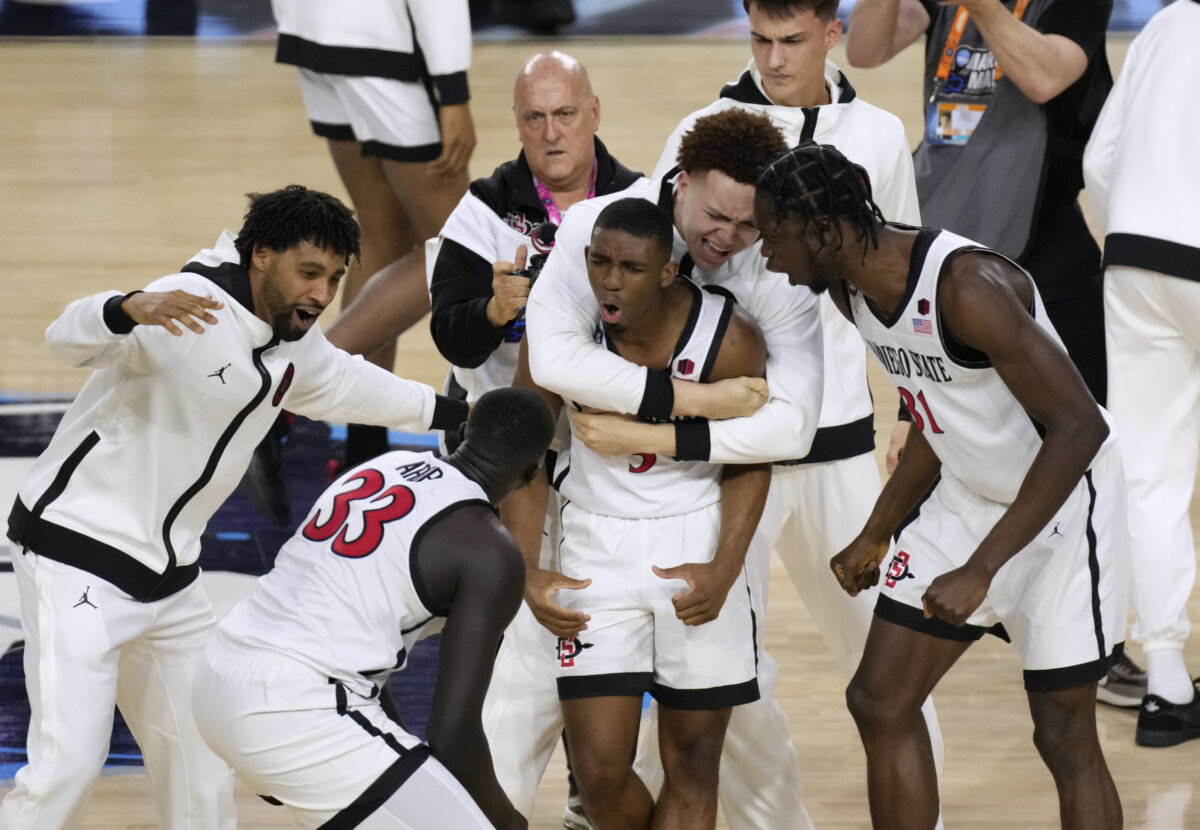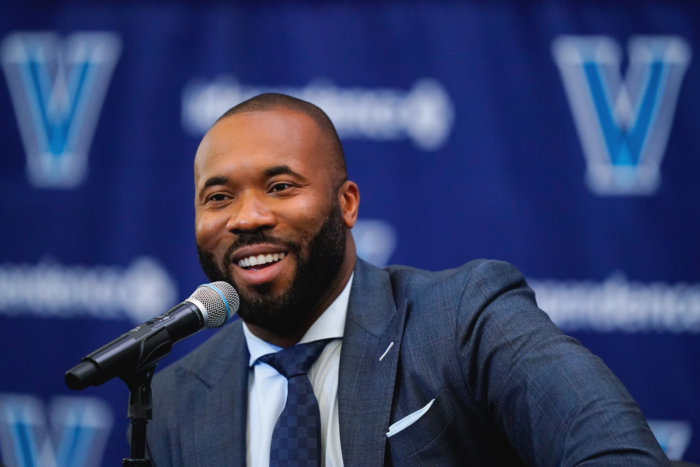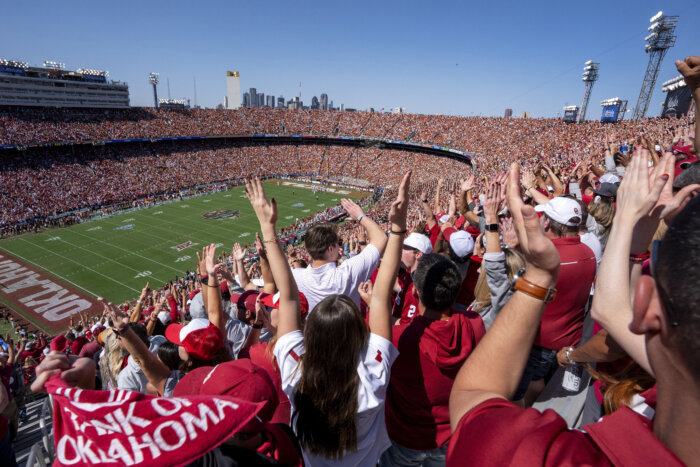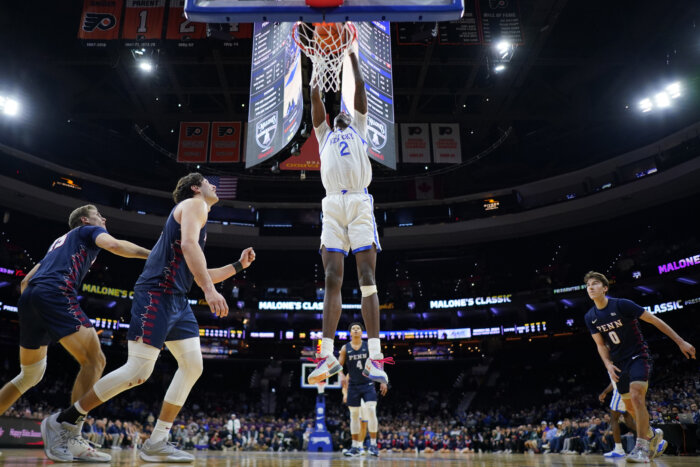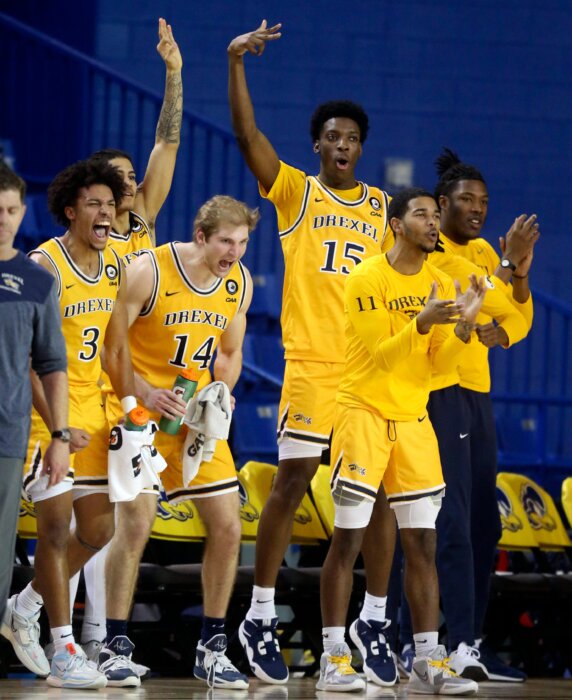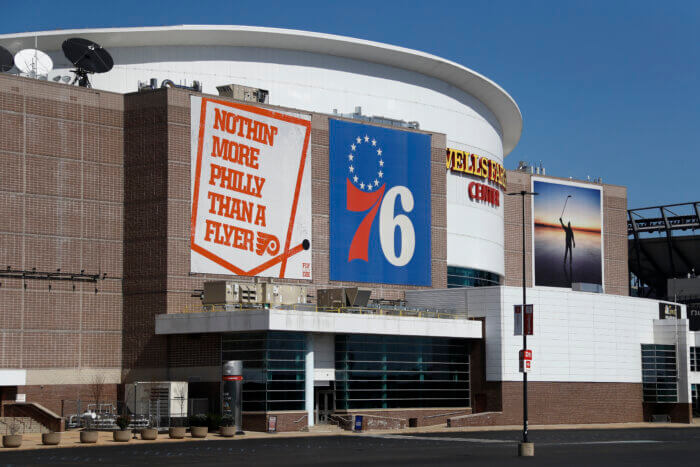By EDDIE PELLS AP National Writer
The transfer portal. Name, image and likeness deals. Sixth-year seniors. Conference realignment. The ever-shifting prospects of the one-and-done rule.
The once semi-predictable ground that underpinned college basketball has been changing at lightning speed over the past 24 months, leaving coaches and their bosses scrambling to adjust to whatever comes next.
The NCAA Tournament closes out Monday when UConn plays San Diego State, and will go down as one of the most unpredictable ever. Unanswered is the question of whether the shifting landscape in college sports was the reason for all bracket madness or simply background noise for an event that is always hard to handicap.
Either way, things are changing and coaches are trying to adjust on the fly.
“These might be some of the greatest challenges we’re facing with the portal and NIL and just lack of direction and rules and regulations,” said Mark Few of Gonzaga, a perennial powerhouse that has reached the Sweet 16 in eight straight seasons.
The four teams that made it to Houston — Florida Atlantic and Miami saw their seasons end Saturday — got here in part because they adapted quickly. All four added players from the transfer portal, some of whom were given an extra year of eligibility due to the pandemic, and some of whom were lured by the promise of sponsorship money under the loosely regulated NIL system.
Very few coaches want to go on record saying that allowing players to earn money through NIL or to freely move around in a billion-dollar business that imposes no such restrictions on the coaches themselves is a bad thing.
Few also want to touch on the bottom line of conference realignment, which has placed familiar schools in strange places — Texas in the Southeastern Conference and UCLA and USC in the Big Ten — in the service of generating more revenue.
And none want to be painted as dinosaurs who don’t believe players should share in the game’s considerable financial windfall.
Some, however, concede they are uneasy about the implications of all this.
“I wish someone would understand the effect of the system,” Florida State coach Leonard Hamilton said. “The story is the number of kids who have been adversely affected by the climate as it is today.”
Hamilton is not the only coach concerned by a recent NCAA study that showed 43% of Division I athletes who enter the transfer portal — taking advantage of their newfound ability to switch schools without having to sit out a year — end up without a place to play.
“Is it great that 43% of young people decided to remove themselves from an experience of a lifetime?” said UMass coach Frank Martin. “People talk about a lot of the great things happening for young students now, but nobody really talks about that.”
Now, the one-and-done rule, which used to be considered one of the biggest destabilizers in college sports, is barely a blip on the radar. For most of the past year, the NBA had made it a priority to eliminate the 17-year-old rule from the upcoming collective bargaining agreement. But that got scuttled at the last minute, and the rule will remain.
“However it all shakes out, what I want is whatever is best for the kids,” said Kentucky coach John Calipari, who for years has embraced the one-and-done system.
Calipari said he’s more concerned about “27-year-olds playing against 19-year-olds.”
“I think that’s an issue that we’re going to have to deal with that we’re totally avoiding,” he said.
The extra year of eligibility granted because of COVID-19, combined with redshirt years being handed out for varying reasons, has, indeed, extended some players’ careers into their mid-20s.
Exhibit A: Since the NBA trade deadline last month, the Houston Cougars, who came into the tournament as a No. 1 seed and were ousted in the Sweet 16, had a starting five that was older than the starters for NBA’s rebuilding Houston Rockets.
Exhibit B: Including 25-year-old guard Adam Seiko, San Diego State has four key contributors who are in their fifth or sixth year of college.
The NCAA is taking somewhat of a passive approach to all of the issues. It has largely refused to get into the regulation of NIL deals, instead leaving it to state governments to decide. Last week, Congress held the latest in a series of hearings that resolved nothing, even as the NCAA asks for a national standard.
NCAA’s new president, Charlie Baker would like to see the creation of a registry of contracts, financial literacy programs for families, a certification process for agents and a uniform standard contract for NIL deals.
For now, though, NIL and the portal have produced a free-for-all.
UMass coach Frank Martin, a former high school math teacher who got fired at South Carolina five seasons after reaching the Final Four, has long leaned into the importance of athletes getting an education. He is also a realist and an optimist, trying to thread the needle in a rapidly changing landscape.
“For the most part, we tend to be fairly intelligent people who adapt,” he said, “and we’ll figure it out, and we’ll adapt, and we’ll grow.”



